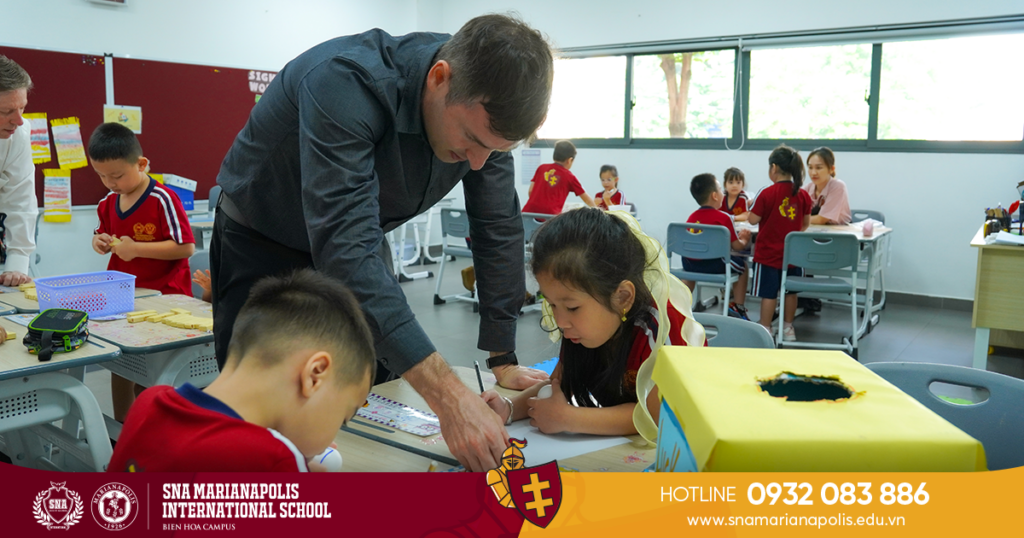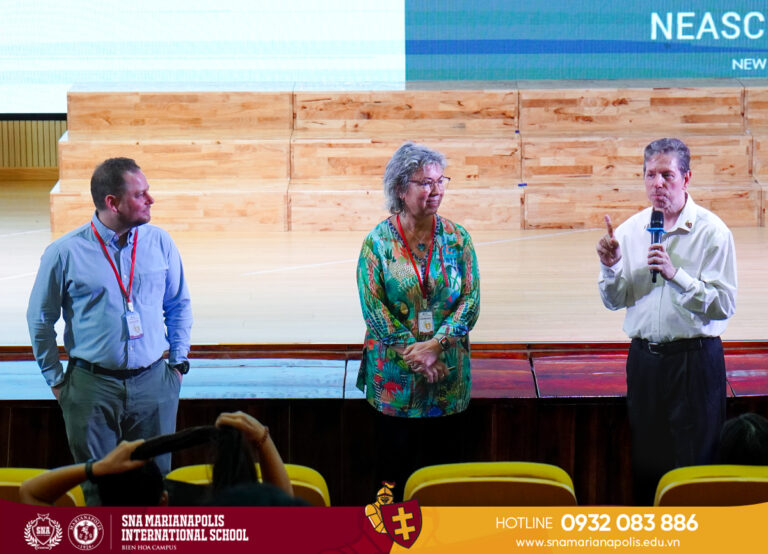In this article, I will speak about how I have used learning centers in my previous teaching and how I coach my faculty to use them in their classrooms. My personal teaching philosophy and style highly values having learning centers in every school at every level.

Learning centers can be applied in any classroom for nearly any subject area. At SNA Marianapolis International School, we encourage the use of learning centers throughout the day. An emphasis on making creative uses of space is helpful (Hue & Li, 2008) and is an important component of learning centers. The advantage we have at SNA Marianapolis is that our school has an abundance of outdoor areas that can be used to expand the learning space of the classroom for a major part of the school year weather permitting. When setting up learning centers, teachers take the time to phase in the centers rather than starting up all at once. This phased approach scaffolds the students to understand how to appropriately participate in a learning center. With the youngest students in elementary school, our initial learning centers are play centers and teach how to move about the centers.

We start with a few learning centers and gradually increase the number. Generally, we can have up to ten learning centers going on at one time by the end of the first half of the year following this approach. I have always preferred having more than enough learning centers as it allows specialized learning centers such as a break/quiet center for those children that feel they need it; the teaching center for individual and small group work; a follow-up center from the teacher center; an independent center for interest enrichment, etc. Teachers usually circulate around the room when they have sent the students to the follow-up center and when there are no students coming to the teacher center.

As students gain more independence, we can have them choose their learning center. Each learning center has directions that are differentiated to allow students of varying abilities to be at the same learning center. This differentiation gives students a choice and a way to become successful. Students usually must complete all the learning centers (or a set amount). A timer will be set to help students know when to move to the next learning center. It seems more complicated than it is, but to me, the key to learning centers really is to be organized. The teacher organizes the room layout that best meets the activities, they organize the system to allow students to keep track of which centers to go to next and which ones they have already visited. They review the procedures every day before starting the learning centers.

When teachers are setting up learning centers, they keep in mind the learning objectives and how they match or reinforce what is being taught in the unit of study or subject area. They look to have a variety of learning centers going. According to Johnson et. al, “another factor to consider in how you organize groups within a classroom is your knowledge of children’s preferred learning styles within any particular subject” (Johnson et. al, 2007). However, what we really need to look at is the learning domains of cognitive, affective, or psychomotor learning in creating our centers in order to bring about deeper thinking and learning. This means to look at how student think, feel, and react in relation to their development.

Learning centers help to create a positive learning environment in that it reinforces giving students, a voice, choice, and ownership of their learning. Students are successful as it gives more time for conferencing and working individually or in small groups. Students are given responsibilities and expectations to meet. Behavior management is generally easier as the students are enjoying and engaged in the learning and off-task behavior is usually remedied with a quiet reminder, quick teacher look, or peer reminder.
References:
Hue, M., & Wai-shing, L. (2008). Classroom management: Creating a positive learning environment. Hong Kong University Press.
Johnson, J., Halocha, J. & Charter, M. (2007). Developing teaching skills in the primary school.
SNA Marianapolis International School – Bien Hoa Campus
- Location: 397, 30/4 Street, Quyet Thang Ward, Bien Hoa City, Dong Nai Province
- Website: https://snamarianapolis.edu.vn/
- Hotline: 0932 083 886
- Email: info@snamarianapolis.edu.vn












